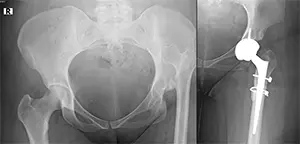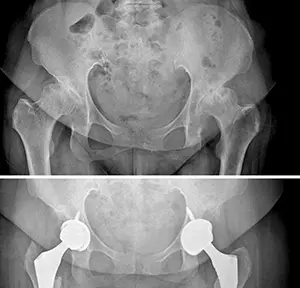
Hip Replacement Surgery in Turkey
Contents:
Hip Replacement Surgery (Video)
Recovery Process After Hip Replacement Surgery
One day after hip replacement surgery, our patients can stand and walk. Walking begins on the same day or the next day after surgery. Wound healing takes 15 days. Meanwhile, dressing is done every 2 days, and after wound control on the 15th day, washing the wound and taking a shower are allowed. Patients who need to wash earlier may be allowed to shower with waterproof dressing tapes. Then, regular checks are performed at the 6th week, 3rd month, 6th month, 1st year and then annually.
Is Physical Therapy Required After Hip Replacement Surgery?
In this surgery, which has a very high satisfaction rate, processes such as leg weakening and atrophy do not develop in the postoperative period, as our patients immediately step on and walk. Since our patients' range of motion increases compared to the pre-operative period and they bear weight, their legs become stronger as they walk. Postoperative in-bed exercises are taught to the patient, and then continued with very simple strengthening exercises that our outpatients can do. In special cases, it may be necessary to seek physical therapy at a physical therapy center.
Is General Anesthesia Necessary in Hip Replacement Surgery?
We generally perform our hip replacement surgeries using a method of anesthetizing the waist, which we call spinal anesthesia. Although general anesthesia is performed especially in patients who prefer general anesthesia, spinal anesthesia is the most preferred method. After spinal anesthesia, the patient has no pain at the end of the surgery and it is a more comfortable anesthesia method.
Will My Leg Length Become Equal After Hip Replacement Surgery?
One of the questions we most frequently encounter is 'Can the leg length inequality caused by hip osteoarthritis due to congenital hip dislocation be corrected after surgery?' Hip prosthesis and leg lengthening are performed in the same session and leg length is usually equalized. Leg lengthening can be easily done up to 6 cm. In patients with a shortness of 8-9 cm, leg extensions are performed, but full equalization is not performed because equalization carries some risks. Leg length inequalities up to 5-6 cm can be easily treated with a prosthesis. However, these situations are specific to the patient. Every patient is different. It would be more appropriate to make a decision based on physical examination and x-ray evaluation.
Hip Replacement Surgery Applications
The patient had a 6 cm short leg length due to congenital hip dislocation. After hip replacement surgery, her leg length was lengthened by 6 cm and equalized. If there is short leg length, osteoarthritis begins in the waist and knees over time due to inequality. In case of unilateral dislocations, hip replacement surgery should be performed at an early age to protect the waist and knee joints.

A different case with 6.5 cm shortness due to hip dislocation. Here, a long-lasting hip prosthesis surgery was performed by placing the hip joint in its normal place, increasing leg length and eliminating lameness, and thanks to the ceramic prosthesis:

The patient who underwent hip prosthesis on both sides:

A different case of arthritis in which total hip prosthesis was applied to both hips:

How Many Years Does a Hip Prosthesis Last?
Although the lifespan of a hip prosthesis depends on many factors, the most important factor is the surface technology. Ceramic surfaces are not prone to wear. It is very difficult to break. Nowadays, with the developing technology, we can perform long-lasting hip replacement surgery thanks to ceramic ceramic prostheses. The use of polyethylene surface and metal head is the shortest-lasting prosthesis. The metal heads used corrode the polyethylene (the plastic part of the prosthesis) over time. It may cause metallosis (rusting) and loosening due to surface wear.
Can Hip Prosthesis Be Performed Bilaterally?
Generally, it is done sequentially, first on one side and after 3 months on the second side. However, in young, active patients with low anesthesia risk, 2 hip replacement surgeries can be performed at the same time. We can do it bilaterally for our patients coming from abroad. There is no harm in doing it on both sides, as it can be walked on immediately after the surgery.



